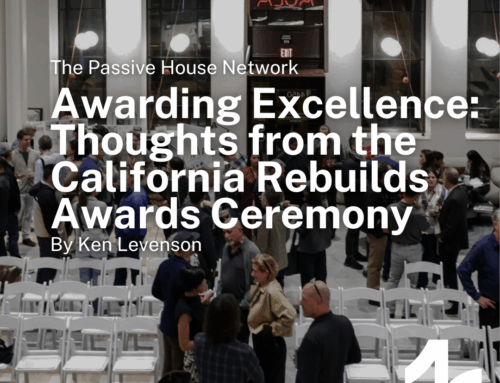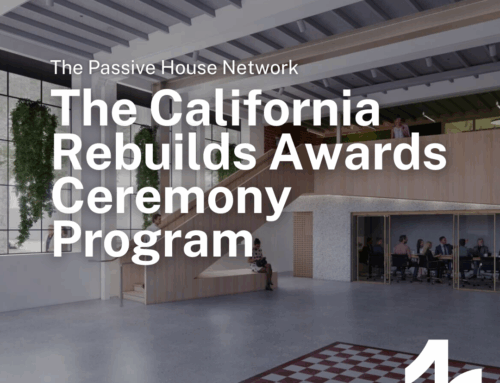Building a Passive House:
A Video Narrative
How much cellulose insulation does it take to insulate a Colorado Passive House? About a truckload, but that’s not the only thing it takes to build one.
The planning, design, and construction that goes into building a Passive House is a unique process that leads to outcomes unlike any other. While the work that goes into sealing the envelope or orienting the building might seem complicated, it doesn’t have to be, and experiencing the end results always affirms what we know–that Passive House building standards create comfortable, climate resilient, energy-efficient areas that prioritize occupant health and wellness. It’s a difference you have to feel to believe.
Back in 2020, we held our conference online so that we could prioritize safety and wellness while we connected and collaborated on all things Passive House. This included the Buildings Tour, and while we weren’t able to have the in-person Passive House experience, our online medium did lead to a wonderful opportunity to showcase buildings from across the country. Andrew Michler from Hyperlocal Workshop showed us his project, based in Colorado, providing a photo- and video-narrative of the building process, complete with blueprints, energy models, and site details. Located in the Fort Collins area and built among mountainous, forested terrain, the house was built on a suspended foundation.
From the first dig, to the framing, to the air barrier, to the insulation, to the final result, see the start-to-finish progress of the build and get a sense of what it takes to build Passive, including how the team took the results from the first blower door test to make even more improvements on the envelope.
As great as it is to see the process in video, there’s something about being inside a Passive House that can’t be replicated digitally. That’s why you should take a look at our participating locations for the 20th Anniversary of International Open House Days, happening next weekend, November 10-12. Experience the difference, the comfort, and the acoustic calm, and gain insight from people who are knowledgeable about the design and building process. Be sure to check back, as we’ll be adding new listings and updating information.
It’s good for the planet, and it’s good for the people that live there. High quality buildings for all!





